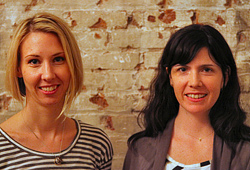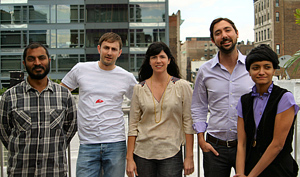Agency Producers Jump into Digital at The Mill
Poolhouse, the freelance integrated producers group, teams with the New York office of the visual effects shop for its second roundtable on digital production
Agency Producers Jump into Digital at The Mill

School may be out for summer, but not at The Mill. The New York office of this US and UK-based visual effects and digital production giant teamed with the freelance producers group known as Poolhouse last week for a tutorial on producing digital content for the web. It was the second such event hosted by the studio and organized by Poolhouse. The event was open to producers on staff at ad agencies as well as to freelancers not affiliated with the Poolhouse group.
"As media converges it alters the way we interact with and consume content, and it also changes the way we get it made," says Bridget Sheils, Digital Executive Producer at The Mill. "So when Karen McKibben of Poolhouse approached me with the idea of a local roundtable series designed to elevate knowledge around digital work, I thought it was a really timely idea."
"One of the most remarkable things I have found about Poolhouse is our common interest in finding ways to continue to grow as producers and staying current with what is happening in our industry," says McKibben. "Once Bridget and I started meeting to go over presentations and plans, we realized this could be a whole series."
The topic of last week's session was decided by popular vote amongst the group after the first talk; it was titled, "From Concept to Launch: The Short Form Website." Leading the presentation for The Mill was its Digital Producer, Kei Gowda, who joined the company from digital agency R/GA.
A group of over a dozen agency and freelance producers were in attendance, with the event being broadcast. Virtual participants were provided with a hashtag so they could tweet in questions during the session.

Gowda kicked off the evening by taking producers through examples of long form websites (Target, Flickr and The New York Times) and short form sites (The Black Mamba, Sportwatch GPS and Lunarglide+ 3 for Nike, which was produced by R/GA).
He described an overview of the process that went into building each type of site, and how they differed in terms of time, budget and prevailing business objectives. For instance, Gowda noted, a short form website will generally take six to eight weeks from blueprint to delivery, whereas a long form site can take years, with multiple releases.
From there Gowda moved into the planning of a short form site, from the early stages of the creative brief to the sites to research when starting the build process. He underscored the importance of having a creative director with a vision for your site, as most short form sites hinge on visual concepts and narrative hooks that determine the way sites will be built.
Other points, such as the merits of using Flash versus HTML5, were discussed, as well as when to convince your client that both versions of a site are needed. The session included a lively back and forth; for example, freelance producer George Roca asked about the Agile development methodology and wondered if it was something he needed to know about when producing short form site projects. "Agile's not really a necessary consideration when producing a short form promo site," explained Gowda. "It's more for application sites like Facebook that are continually adding and testing new features."
The session wrapped with a few more questions and the promise of another roundtable session next month. Next on the docket will be "The Myth of Assets," hosted by The Mill's Creative Technologist, Andrew Bell. The event is open to agency producers (both staff and freelance) exclusively; for more information, contact Poolhouse's Karen McKibben at karen@karen-mckibben.com.
Published July 20, 2011








